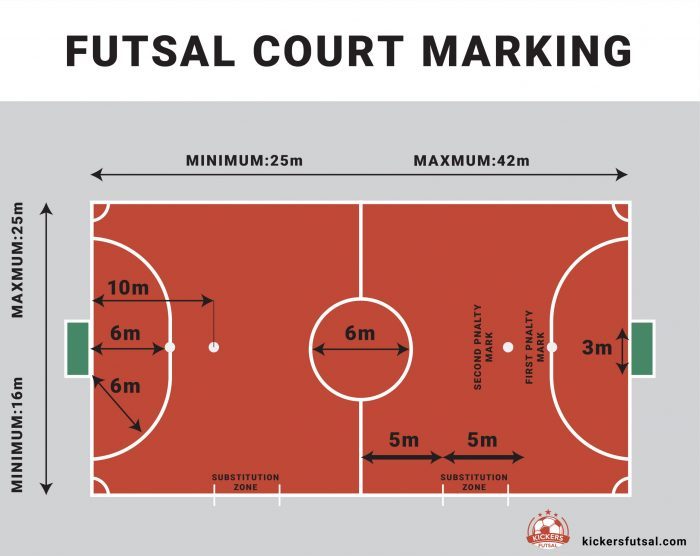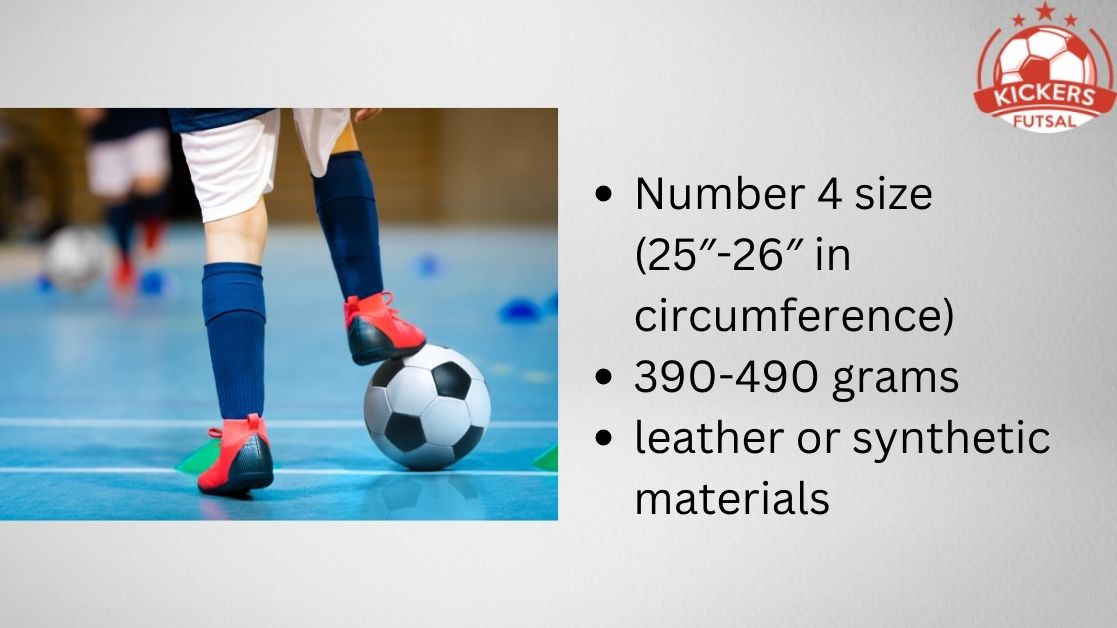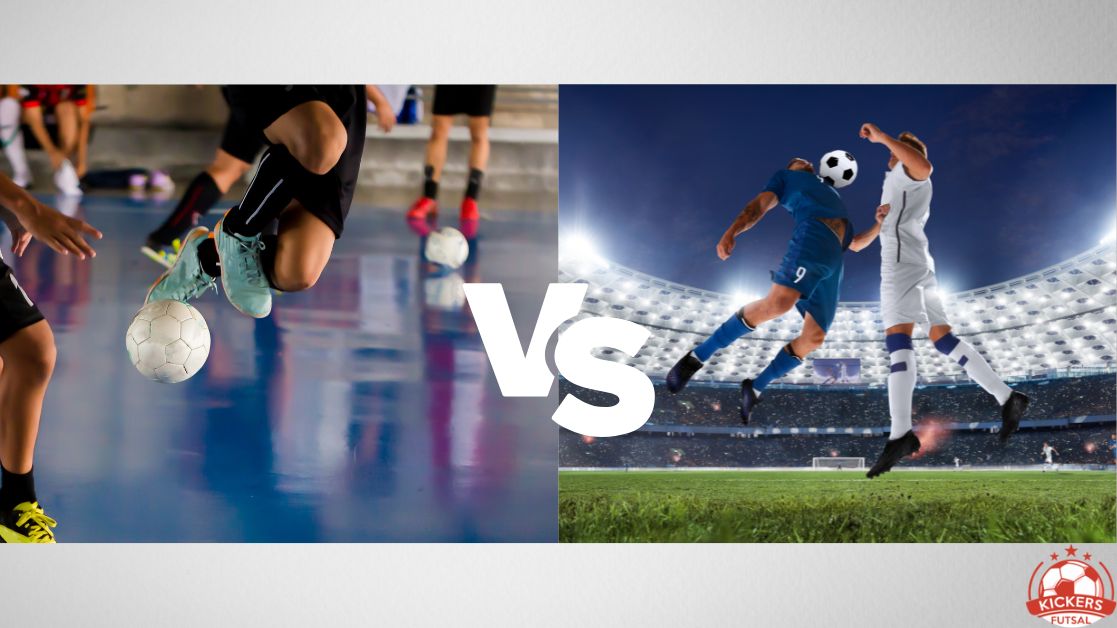Soccer (or let’s say it right, Football) is typically played on big fields, whereas futsal is a variation of soccer played indoors on a much smaller court. Because of the smaller field size, futsal games are faster-paced and more intense, with more opportunities for goal-scoring.
Futsal is originated from the Portuguese word futebol de salo and the Spanish futbol sala or futbol de salón. While “hall/lounge football” is a more accurate translation, it is typically interpreted as “indoor football.”
Futsal is an indoor football game played by five players on a basketball-sized court at the club and international levels. While it may appear to be similar to football or soccer, there are several key differences. To help you understand the distinction between the two we have listed them below:
Field Location
As mentioned, futsal is played indoors, as opposed to soccer, which is played on a grass or turf pitch. Furthermore, the pitch is not made of grass, but rather of a hard surface. However, the surface is still confined by lines, exactly like an outside soccer field.
Court Size

Soccer fields are typically 75 yards by 120 yards. The court in futsal, on the other hand, is significantly smaller. The court in a normal futsal match measures 42 meters by 25 meters. As a result, because there is less space between the end lines, the speed of play in a futsal match is substantially faster.
Ball Size

The ball used in a soccer match is a regular size 5 ball. In addition, the ball in soccer is designed to bounce off different surfaces. A futsal ball, on the other hand, is size 4, which is smaller and denser. As a result, the ball never bounces on the futsal court.
Substitution Rules
In contrast to soccer, a single futsal game allows for unlimited substitutions. Substitutions in soccer are limited to three to five depending on the league. There is no limit in futsal, and players can be subbed on and off as long as they do so from the specified substitution zone and do not exceed 5 players on the court, including the goalkeeper. Soccer game usually allows 3 substitutions during the game only, but many leagues switched to 5 substitutions after the COVID pandemic.
Number of Players
Because the pitch is smaller, there are fewer players on each team during a game. In contrast to a traditional 11 against 11 soccer match, futsal only has 5 players on each side.
Half Length and Stopped Clock
A typical soccer game is split into two 45-minute halves with a final 5-minute stoppage. But in a futsal game, the halves are half as big. In a futsal match, each half lasts for 20 minutes. The clock comes to an end when the ball is out of bounds. This means that there won’t be any stoppage time at the conclusion of the competition.
Kick-Ins
In a typical soccer game, the team with possession typically gets to kick the ball back into play when it is out of bounds. However, futsal does not use throw-ins. Players kick the ball into play instead. As a result, the play moves much more quickly than it would in a conventional soccer game.
Offsides Rules
Offsides is a common soccer regulation that helps the defending team repel attackers from their goal. However, there is no offsides regulation in futsal because of the small size of the playing area. Because of this, futsal attackers are free to get as close to the goal as they like. The outcomes frequently involve more possibilities for goals than are typical in soccer.
Restart Time Limits
Players in futsal cannot take their time returning the ball to play. Instead, they have a set period of time before they are called. Players have four seconds in a standard futsal match to get rid of the ball and put it into play. This is unusual in soccer and contributes to the game’s faster speed.
Conclusion
While soccer and futsal have their similarities, the two sports are actually played differently. Futsal requires a different set of skills to play. Nonetheless, soccer and futsal are both great ball sports that anyone should try.






